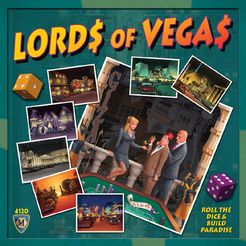I have not
played Blitzkrieg Commander (BKC) for many years; I’m not sure why because I
generally liked the mechanisms and the games that resulted. Interestingly I
have played more games using the modern ‘sister’ set of rules, Cold War
Commander (CWC), using my large 6mm late 1970’s Soviet/NATO armies. My old copy
of BKC version 2 was a bit tatty, so when the latest BKC version 3 (Pendraken
Miniatures, 2017) was published, I immediately decided to purchase.
The rules
are nicely produced and illustrated, with key mechanics clarified by worked
examples. The layout used for both the scenario and army list sections have
been significantly improved in my opinion; much clearer and attractive to look
at. Regarding the rules themselves I did not think any major changes had been
made compared to version 2. Now I have to say that I have resisted going back
to my version 2 rules for the purposes of comparison because I was concerned
such a move would result in confusion on the tabletop. Bearing in mind that I
have not played BKC for a few years, the only significant changes that stood
out for me lay in the off-table support and recce sections, where the rules
appear more streamlined.
Next I tried
the new version BKC on the table using my 6mm early war French and German
forces in a small, solo 1,000 point a side encounter game on a 5’x3’ table. The
game flowed well, very smoothly, with little need to refer to the main
rulebook. The main thing that needs to be in the mind of a player is
opportunity fire: Whether I’m playing solo or opposed games, I tend to find
myself switching off during my opponents turn, missing opportunities to
interrupt his movement with opportunity fire. The nice thing about opportunity
fire is that it does not require a command roll, an important factor for poorly
commanded armies (like early war French). In my game the French went down to a
major defeat, largely because of the poor command of their HQ units and their
poor co-ordination of armour and infantry. One thing really stood out in the
game which was the devastating effectiveness of the PzKfw-I units on the
unfortunate French infantry. The army listing states the PzKfw-I has a AP
rating of 4/60! Surely this must be wrong? OK, the PzKfw-I does cost 85 points
but, even so, it is now an infantry killer!

I next
played a 1941 North Africa encounter game (1650 points aside). I took the
British Crusaders and hoped for the best! On turn 1 I only managed to get my
infantry and ATG formation on table, whereas the Germans all appeared and
advanced. On turn 2 I again failed to get my armoured forces on table, and the
German tanks rapidly advanced threatening both objectives and starting to turn
in on my worried infantry. I thought the game was lost but Lady Luck came to my
rescue. On turn 3 all my armour arrived and they were now at short range (due
to the German advance), so they opened up. The central German PzKfw-III force
went up in flames, and the other German tanks suffered a couple of
suppressions. On the next turn I was able to largely destroy the remaining
Panzers, and my FO accurately brought down fire from my 2 off-table 25pdr
batteries on the German infantry in a concentrated strike, wiping them out and
suppressing 1 German HQ unit. At this point the game was effectively over, the
German threat had been eliminated and I had only taken minor losses. The
initial delay I had faced had turned to my advantage, bringing on armoured
formations at close range is devastating, and with hindsight the Germans would
have been better served not making a dash for the objectives early on. All in
all an enjoyable game (for me!), the rules worked well and play was fast.

To conclude,
I like BKCv3 very much. The command system introduces a nice degree of
uncertainty (the French CV7 HQ’s are a liability) and interestingly I never
rolled either a blunder or stunning success (box-cars or snake-eyes). Both
players are actively engaged and a key is deciding when and where to engage in
reactive fire. Off-table fire, when concentrated, can be lethal (possibly
overly so), and I definitely think the PzKfw-! AP value is too high. I can see
BKC being a go-to set of rules for larger WW2 games, and perhaps the best
compliment is the fact I have decided to invest in some new 1940 France armies.
I definitely think 6mm is too small; I had considerable trouble distinguishing
PzKfw-I from PzKfw-II, and PzKfw-III from PzKfw-IV tanks. I plan to ditch (sell
off) my 6mm forces and buy a larger scale. Initially I thought 10mm would be
best (and cheapest) because they both look good and work well scale-wise on
table. The disadvantage with 10mm is they are out of kilter with the more
common 15mm used by most other WW2 gamers (I’m thinking of FoW gamers in
particular), and also I don’t have an extensive array of 10mm terrain pieces.
This is not a problem when fighting in North Africa but a European setting
would necessitate the purchase a lot of new buildings. I have therefore opted
to go with a mainstream 15mm scale, which will allow me to integrate with other
gamers and enable me to employ my stock of 15mm terrain.






